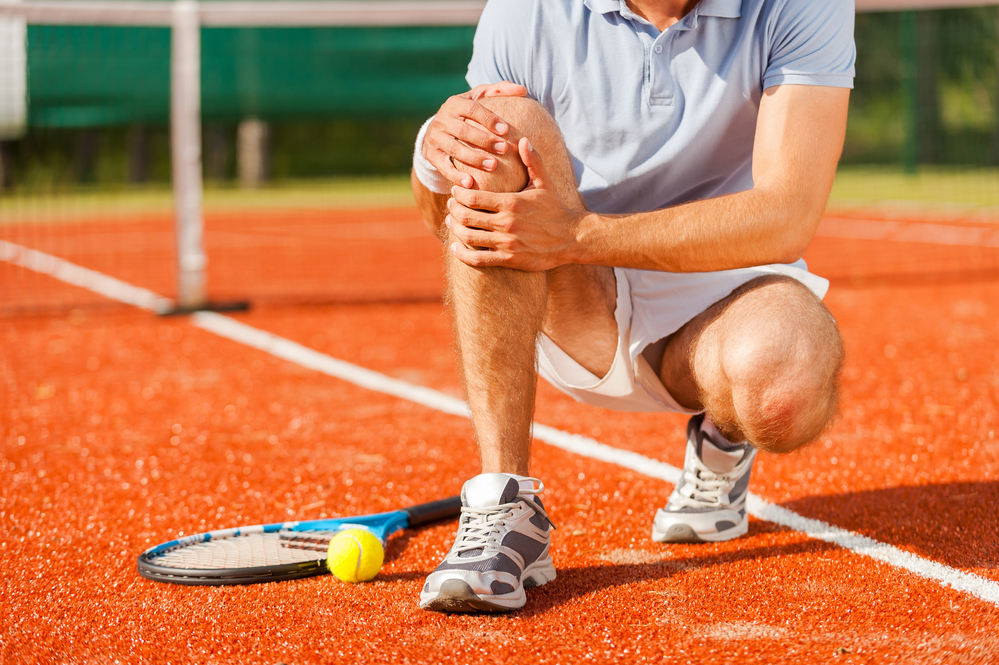7 Tips to Prevent Common Athletic Injuries
 Avid athletes are susceptible to a wide variety of injuries related to their sport, and often, every sport has its own types of common injuries. However, there are a few athletic injuries that are frequently seen in athletes of all types, from runners to football players, and everything in between. Those injuries are sprains and strains. Luckily, there are a few steps that everyone can take—whether you’re a weekend warrior or a professional athlete—that will help to prevent these common athletic injuries.
Avid athletes are susceptible to a wide variety of injuries related to their sport, and often, every sport has its own types of common injuries. However, there are a few athletic injuries that are frequently seen in athletes of all types, from runners to football players, and everything in between. Those injuries are sprains and strains. Luckily, there are a few steps that everyone can take—whether you’re a weekend warrior or a professional athlete—that will help to prevent these common athletic injuries.
Warm Up and Stretch
We really can’t overstate the importance of warming up and stretching before a workout or before playing a sport. Stretching and warming up helps to gently soften and lengthen your muscles and ligaments, so that they’re more prepared for the upcoming activity.
Think of your ligaments and tendons as rubber bands. If you gently and gradually stretch them, they’ll be able to extend and retract much more easily. But, if you don’t provide that gentle stretching, the rubber band will be much tighter and stiffer. Then, if you yank forcefully on the band (i.e., when performing a cut while playing a sport), it is far more likely to snap.
So, be sure that you don’t skip your warmups and stretches before hitting the field, court, or even the treadmill.
Hydrate, Hydrate, Hydrate
Proper hydration is important for everyone, but if you’re an athlete, you should pay extra attention to how much you’re drinking. Not only will drinking enough water help give you the energy to perform better, but it can protect your joints and ligaments from damage. Having enough water in your system helps to provide your muscles, ligaments, and tendons with proper elasticity, so that they can extend when needed and “spring” back into shape more easily.
Wear Proper Shoes
The right shoes for your sport will provide you with the support and shock absorption that your feet, ankles, and knees need. This can help to reduce the likelihood of a sprain or strain while engaging in your sport. Additionally, the right shoes will provide you with the traction your sport needs (whether on the court or on the field) to help reduce the likelihood of slips and falls during play, which can also result in sprains and strains.
Run on Flat Services
Whenever possible, keep your athletic activities on flat surfaces. Uneven surfaces make it more likely that you will “roll” and sprain your ankle. You may also overextend and sprain your Achilles tendon by running or playing a sport on uneven surfaces.
If you engage in athletics outdoors, make sure any running trails you follow are relatively even. Check fields for uneven patches of ground or gouges in the grass, so you can be aware of them and avoid injury during play.
Know Your Limits
It’s important for every athlete—whether you’re a professional or a casual player—to know their limitations. Don’t engage in sudden, intense athletic activities if you have not played or exercised in a long time. Ease back into a sport after you’ve taken a hiatus from it, and recognize the signs that your body has had enough.
If your legs begin to ache, or you feel any pain, stop playing immediately. Pushing your body may be a good way to progress athletically, but pushing it beyond its limits is always a recipe for an injury.
Strengthen Your Muscles
If you’re a runner, or engage in a sport that you don’t feel requires a lot of muscular strength, you might be tempted to skip the weights and stick to cardio. However, properly strengthening your muscles can provide your tendons and ligaments with adequate support to reduce the likelihood of strains and sprains. Your muscles and ligaments work together, and the stronger your muscles are, the more they will be able to help your body absorb impacts and sudden changes of direction, reducing the odds of a sprain or strain.
Wear Support Garments When Needed
Certain types of garments and medical equipment can help to reduce the odds of an injury during sports. If you are still recovering from an injury, consider wearing a brace that supports the injured area. For example, wearing an athletic knee brace can help to support a knee that is still recovering from a past strain.
Compression garments have also been shown to reduce sprains and strains during athletic activities, whether or not you’re recovering from an injury. These garments provide pressure and mild support to your muscles and joints, as well as promoting blood flow throughout the area; both of these factors may reduce your odds of being injured.
If you’re looking for compression garments or athletic support braces, stop by Medical Xpress today.